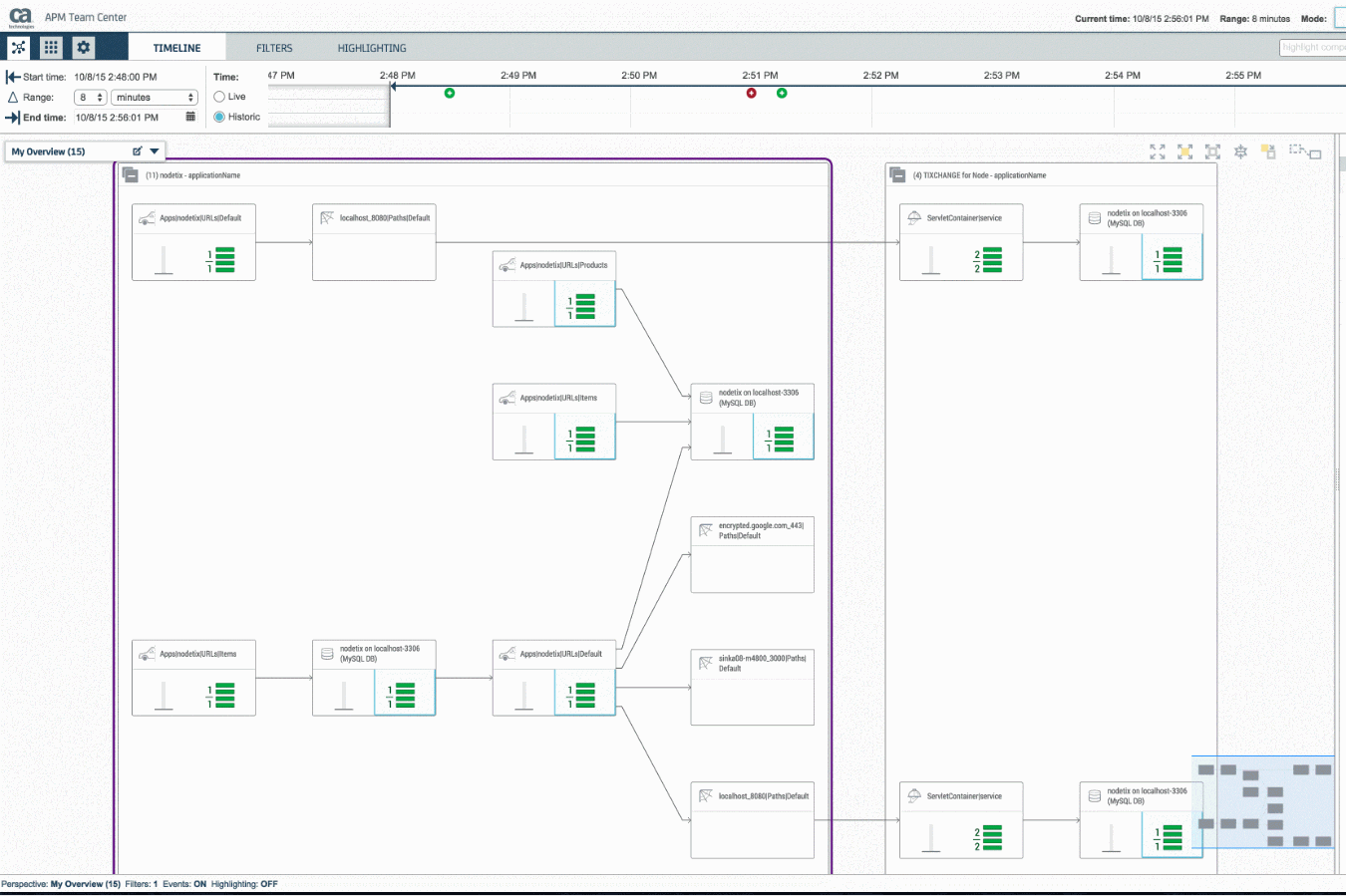By Amy Feldman
Microservices architecture compartmentalize the application by function allowing for greater application flexibility, portability and an increase in update/changes. This architecture introduces new layer of monitoring challenges to an already complex application environment. The strides and enhancements we made in CA APM 10 with APM Team Center Perspectives, Timeline views and Differential Analysis has helped us to make strides in solving these challenges of monitoring microservices that include:
- Reduce complexity – Since microservices introduces many new smaller applications components to an already complex application environment. Often times it is difficult to understand the performance and health of each component and their impact to other services. With the increase in components it becomes difficult to understand application environments and every components relationships using the traditional application service maps. CA APM Team Center Perspectives helps to reduce this complexity with its patent pending innovation of pivoting on attributes, allowing users to view application relationships and health that are relevant to their role and task.
- Understand change – Microservices architecture offer developers a new level of flexibility allowing them deliver updates and changes more frequently. With the increasing rate of change it becomes difficult to understand if that change has had an impact on the performance of the application. CA APM Team Center Timeline view allows users to view not only change but the impact that change has had on the application health. By scrolling back in time users can quickly and easily find the initial root cause of an issue which is key in triaging an application issue.
- Know when and where to act – In new modern applications that utilize a microservices architecture, failure takes on a whole new meaning. In many cases the application is designed for failure and is resilient, meaning the app should fail and restart in a new environment without impacting the end user. In these environments, determining what application issue needs immediate attention is difficult. CA APM Differential Analysis looks at performance trends to help you take the noise out of events and determine when and where to act allowing users to focus on the real issues before they impact the end user.
- Elegance at scale– In these new modern environments, components come and go with greater frequency and scale resulting in an increase in monitoring data collected. Not only does the monitoring tool need to scale with the scaling needs of the application but it needs to be easy to understand the complex and vast set of data. CA APM provides smart instrumentation allowing you to collect what you need when you need it, monitoring at scale and a simple view into complex application environments. These help the users to gain control of a sprawling application and information.
Attend our upcoming webcast with Jason Bloomberg to learn more about how CA APM monitors applications using a microservices architecture. To learn more about CA APM 10.1 please refer to the CA APM 10.1 release notes.
To read the entire article, please go to https://communities.ca.com/community/ca-apm/blog/2015/10/15/what-s-new-in-apm-101-monitoring-modern-apps-nodejs-cloud-foundry-docker-containers.



